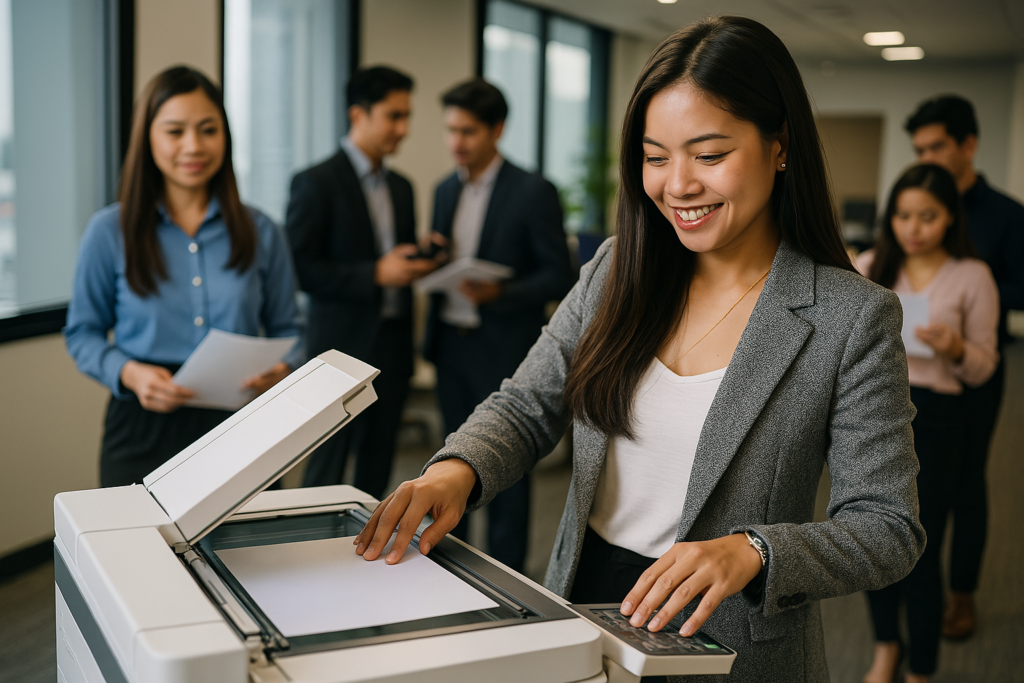
Best Practices for Event Printer Rentals: A Complete Guide
When planning a conference, seminar, trade fair, or any major event, on-site printing often plays a critical role in ensuring smooth operations. From registration badges and programs to emergency handouts, the need for reliable printing cannot be overstated.
In this blog post, we’ll walk you through the best practices for event printer rentals—covering everything from choosing the right equipment to ensuring data security and technical support. With proper planning, you can avoid delays, eliminate printing errors, and create a seamless experience for your attendees.
Why Printer Rentals Are Essential for Events
No matter the event size, printing needs are nearly always present. These may include:
Name badges and guest IDs
Schedules and programs
Signage and instructions
Certificates and acknowledgments
Emergency print jobs or last-minute updates
Having the right printer on-site ensures your team can adapt quickly, avoid logistical problems, and maintain a professional image.
1. Understand Your Event’s Printing Requirements
The first step in best practices for event printer rentals is identifying exactly what you need.
Ask Yourself:
What materials will be printed on-site?
How many pages do we expect to produce per day?
Do we need color or monochrome prints—or both?
Will printers be stationary or portable?
Knowing your print volume and document types allows you to choose the right model for the job.
👉 Explore options for large-scale needs: High-Volume Printers for Event Needs
2. Choose the Right Printer for the Right Job
Not all printers are created equal. Depending on the event setup, you might need a mix of printer types:
Portable Printers
Ideal for mobile check-in desks, satellite booths, or compact spaces. Many come with wireless connectivity for added convenience.
👉 Browse models: Portable Printers for Events
High-Volume Laser Printers
Perfect for printing bulk materials such as schedules, feedback forms, and speaker packets quickly and efficiently.
Label/Badge Printers
Specialized printers make check-in faster and more professional with customized name tags and QR code badges.
Make sure to match printer capacity and features to each station’s specific task. It’s common to rent more than one type for larger events.
3. Prioritize Security in Event Printing
Data security is often an afterthought during events—but it shouldn’t be. Attendee information, internal documents, and even billing forms may pass through your rented printers.
Best Practices:
Ensure the printer has data encryption or memory clearing features
Restrict access with PIN codes or secure print release options
Partner only with rental providers that follow industry-standard data privacy protocols
👉 Read more: Security Considerations for Event Printer Rentals
4. Schedule Setup and Testing in Advance
Don’t wait until the day of the event to set up and test your printers.
To Avoid Problems:
Schedule printer delivery at least 1–2 days before the event
Run test prints from all connected devices
Check Wi-Fi or Ethernet compatibility
Ensure the correct drivers/software are installed on all laptops and tablets
This allows time for troubleshooting and reduces the risk of last-minute delays.
👉 Full checklist here: Setup and Support for Event Printer Rentals
5. Have a Dedicated Print Manager On-Site
Assign a team member to oversee printing during the event. Their responsibilities can include:
Monitoring toner and paper levels
Troubleshooting printer errors or jams
Coordinating with technical support if needed
Managing print queues and preventing overuse
This ensures consistent output and prevents chaos at printing stations.
6. Prepare for Emergencies
Even with the best planning, things can go wrong. A good backup plan includes:
A secondary (spare) printer on standby
Extra paper and toner cartridges
Contact number for your rental provider’s support team
Digital copies of all print materials stored in the cloud or USB
Ask your provider if they offer rapid replacement in case of hardware failure.
7. Evaluate Cost and Rental Terms Carefully
Before signing your rental contract, make sure you understand all the charges:
Rental duration (daily, weekly)
Page limits and overage fees
Delivery, setup, and takedown costs
Support coverage and hours of availability
Request a clear and itemized quote so you can compare options and stay within your event budget.
8. Review Real-World Examples and Lessons
Before making final decisions, it’s helpful to learn from those who’ve already gone through the process.
👉 Read these insights: Case Studies – Printer Rentals for Events
You’ll discover how other organizations managed large events, what they learned from technical issues, and how printer rentals helped solve common event pain points.
9. Confirm Post-Event Procedures
Once the event ends, the job isn’t over yet. Wrap-up best practices include:
Backing up any remaining digital documents
Clearing printer memory or cache (for security)
Returning unused consumables if applicable
Confirming printer pickup date and time with the rental company
These steps ensure nothing is left behind, and your event data remains protected.
Common Mistakes to Avoid
Renting the wrong type of printer for your specific use case
Underestimating print volume, resulting in frequent jams or delays
Not scheduling setup and testing well before event day
Skipping security features, especially for sensitive data
Failing to plan for breakdowns or connectivity issues
Avoid these mistakes by following the best practices outlined here.
Conclusion: Set Your Event Up for Success
Following these best practices for event printer rentals helps you stay ahead of potential issues and ensures smooth, professional operations from start to finish.
By choosing the right printer, securing your data, coordinating setup and support, and preparing for surprises, you’ll keep your event running efficiently—and your guests impressed.
Ready to streamline your event printing?
Explore rental options and expert support from Marga.biz – Best Practices for Event Printer Rentals.
